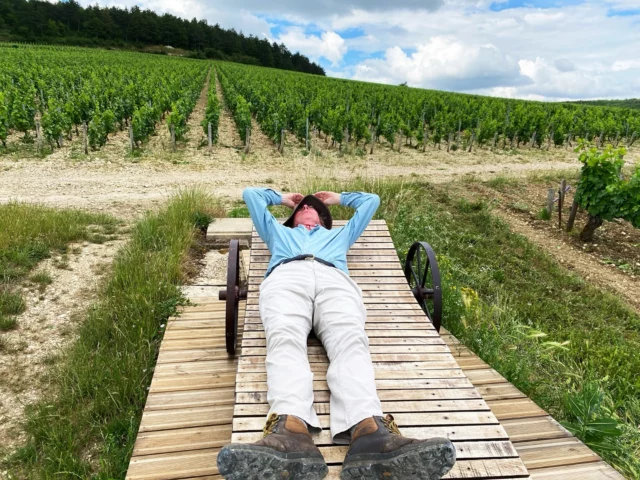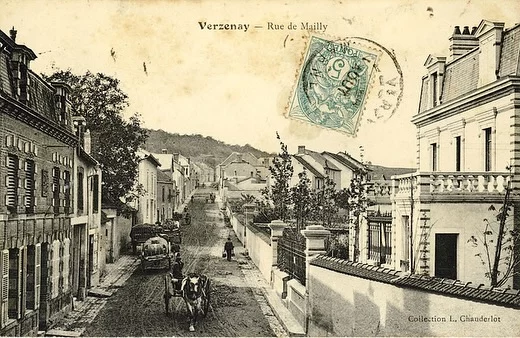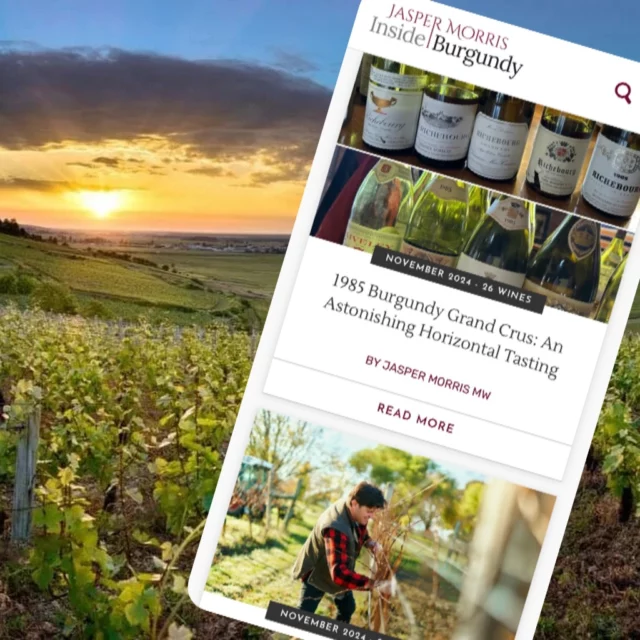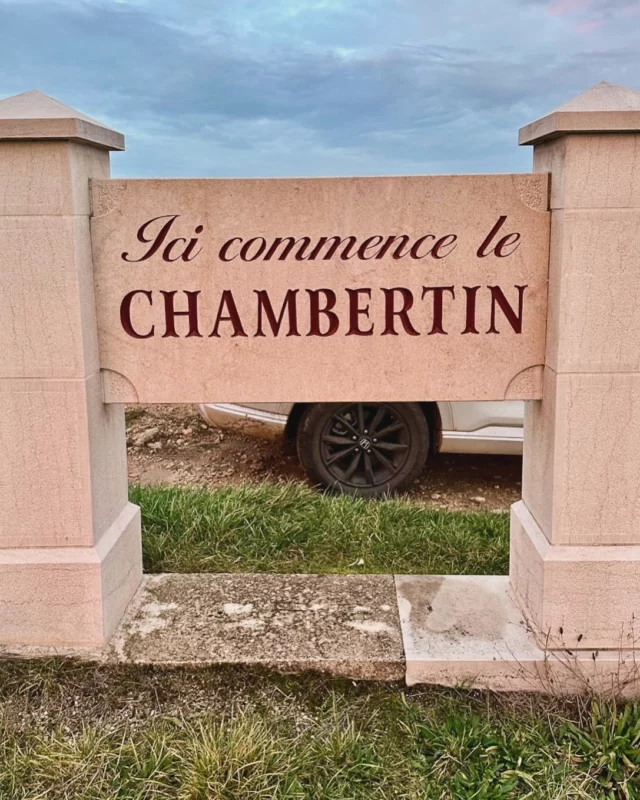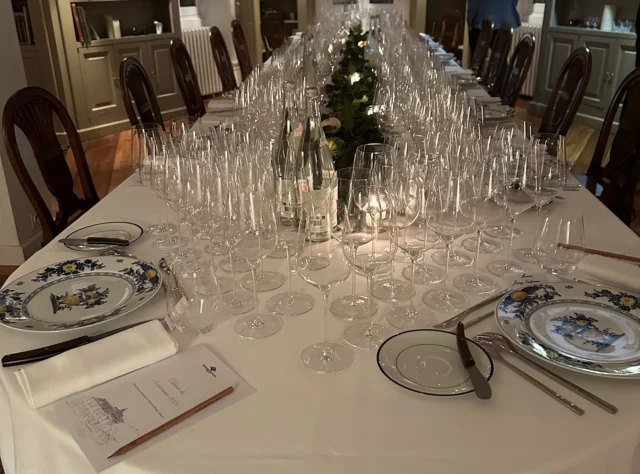2010 Vintage Overview
Updated Sep 2022
The Weather
The winter was cold, exceptionally cold, with temperatures dropping below -20°Cshortly before Christmas. Dijon recorded its lowest-ever December temperature and children of all ages got out their toboggans. Normally a cold winter is good for the vines as it kills off all the pests, but this proved to be too extreme. Some vignerons in the Côte de Nuits got a nasty shock in the spring when their vines burst into leaf – or rather when some of them failed to do so. The cold had been intense enough to freeze the vines to death in certain places. This has not happened since 1985, and in fact exactly the same vineyards were affected this time around – those on the western edge of the old RN74, where the road is banked up above the vineyard, causing the cold air to settle on humid soil. Vineyards in Gevrey-Chambertin, Morey St-Denis, Vosne-Romanée, Côte de Nuits-Villages and a little of Clos Vougeot were the worst affected.
Flowering was late and strung out through the middle of June, with some coulure and a lot of millerandage, and giving an expected harvest date of around September 20-25. The first half of July was exceptionally hot and dry, so much so that there was even talk by some of another 2003. However, the weather weakened in the second half of the month and August never really happened. The good news was that there was relatively little evidence of oidium, mildew or rot – but clearly the weather needed to cheer up significantly in September.
After some heavy rain on Wednesday September 8th conditions improved, with beautiful weather on Saturday 11th and Sunday 12th – until a storm blew in on the Sunday night. This had been anticipated and seemed dramatic, but blew over quite quickly. Only subsequently did we discover the damage. First, there was heavy hail in Santenay, stretching into Chassagne and the top end of St-Aubin. Secondly, the thunder which accompanied the storm ‘turned’ white grapes –like curdling milk – which were getting close to ripening and had somewhat fragile skins.
Producers in the Côte de Beaune now advanced their picking plans, because even though the whites were not quite fully ripe, the risk of encroaching rot was too great. Sugar levels were in fact adequate, with acidity still quite high. The Mâconnais avoided the storm of September 12th but the northern part of the region suffered a similar one, with the same ‘turning’ effect on Tuesday 14th. This followed a hail storm in Vinzelles and parts of Pouilly-Fuissé on July 10th.
Some growers began picking during the week of September 13th (rain on Wednesday but otherwise reasonably fine) and most got under way in beautiful warm sunshine from the following weekend. There was a rush to pick all the whites while the weather held – indeed was outstandingly fine, through to dusk on Thursday 23rd – and some Côte de Beaune reds were also brought in.
The reds were generally less advanced, and were unaffected by the storms. There was a bigger crop set in the Côte de Beaune compared to the Côte de Nuits, as a result of better flowering conditions, but it is on the small side everywhere – and just as well, because a 2009-size crop would have rotted rather than ripened in the 2010 weather conditions.
Friday 24th was horribly wet and windy, with another shower or two on Saturday. A generally cool, grey, overcast succession of days followed, during which most of the Côte de Nuits was picked. This weather at this late stage had little impact on the grapes, except perhaps in the lowest-lying parts, but must have dampened the pickers’ morale. The producers themselves were bemoaning the small volume, often below 30hl/ha, rather than the quality as they could point to healthy-looking bunches with tiny grapes, and little rot needing to be removed on the sorting tables. With reasonable sugar levels and slightly high acidity, this could yet turn out to be a pretty decent vintage.
Burgundy’s old friend, the north wind, came to the rescue and dried out the vineyards, preventing rot from galloping through the vineyards. Those grapes which had ‘turned’ as a result of the storm now dried out, or at least evolved towards noble rot rather than grey rot. The tricky decision if you were in the rot- affected area – Chassagne-Montrachet and to a lesser extent Puligny and parts of Meursault – was when to pick. A few decided that rotten grapes at 15 per cent potential alcohol and green grapes at 9 would average out to an acceptable 12 per cent, which I am not sure I can entirely approve of, but more often people held out – which reduced yield but improved balance, unless the percentage of rot was too high.
At harvest time, the producers felt happy to have escaped disaster. They did not expect anything remarkable from the vintage, and indeed the start of the vinification process was not especially auspicious, with the grapes reluctant to hand over their colour and fruit. But by the time the new wine was ready to be decanted out of the vats into barrels, producers were sounding a lot more confident. Some had chosen to go with the style of the vintage and keep extraction to the minimum; others wished to compensate for the reluctance of the fruit to emerge initially, and had gone for a longer than usual vinification.
Many fewer stems were used in 2010 than the previous year, partly because they were less ripe and partly because the style of the wines did not need the freshening aspect which was welcome with the 2009s. Another feature of 2010 was a tendency to use less new oak, profiting instead from the one- year-old barrels of the previous vintage.
First Impressions
The red wines are built around a balanced triangle of fruit, tannins and acidity, whereas some Burgundian vintages lean more towards the tannic or the acidic. These are beautifully poised wines in 2010, very classical, with much more red fruit than black, notably cherries and raspberries, and very few green notes. They range from lighter to medium- full bodied depending on the extraction choices made by the producer. The major villages of the Côte de Beaune have fared as well as the Côte de Nuits. No other vintage is directly comparable, but the purity and fresh finish of 2002 plus the density (and alas scarcity) of 1991 come to mind. There is huge pleasure in store for the Burgundy lover.
It is mostly a very fine vintage for white burgundy, though the storm on September 12th impacted some but not all of the southern Côte de Beaune wines. Those in the less-affected areas, or who made the right decisions if they were affected, have made some fabulous wines: very aromatic up front, indeed with a great range of different flavours, dense and fleshy in the middle, and with very good acidity behind – almost a 2008 acidity but much better integrated into the main body of the wine. The aromatics range from apple, fresh and green or ripe and baked, to more exotic orange blossom notes which may indicate some noble rot. Meursault is particularly fine, while further north Chablis is superb, enjoying a vintage which combines density of flavour with a classic mineral acidity – wines worth keeping.
The wines in bottle
Once the whites could be seen in bottle, we found evidence of variability depending on the health of the grapes at harvest-time in the wake of the famous storm. At our Three Years On ‘Burgfest’ tasting we were surprised by the number of wines showing some noble rot – not unattractive at all, though in some instances it masked the terroir of the appellation. The whites of 2010 will provide a great deal of pleasure, but may not make old bones. The reputation of Chablis 2010, however, goes from strength to strength – this is a truly exceptional vintage with potentially very long-lived wines.
The reputation of the 2010 vintage has continued to grow, so that for red wines it is now seen as perhaps the best vintage for a generation, excluding 2005. It is not just that the wines are very good, but that their pure and balanced style is so much appreciated by Burgundy enthusiasts, in contrast to the richer, heavier 2009s.
We eagerly awaited our annual Ten Year On tasting in June 2020, but alas it has had to be postponed because of lockdown rules. Nonetheless, it has been possible to drink 2010 reds throughout their life with great pleasure and not too much of a feeling of infanticide. The quality of the Pinot fruit and the innate balance are responsible for this enhanced level of enjoyment. The wines will continue to keep well, but may in due course begin to fade, while the greatest 2009s will by then only just be starting to develop.
